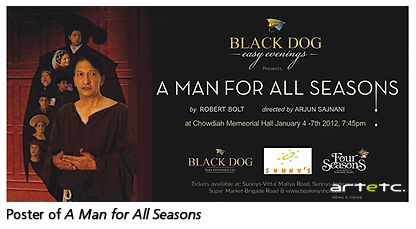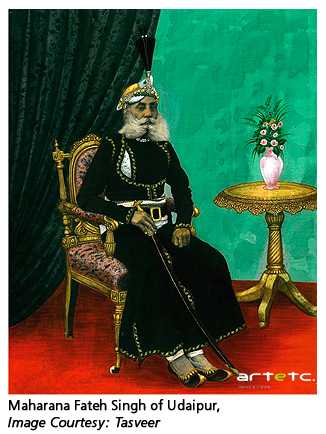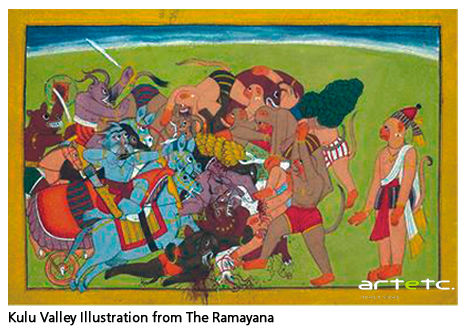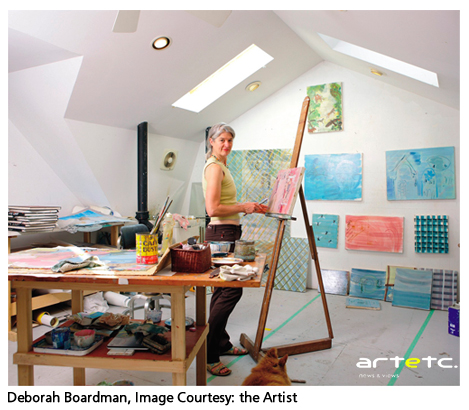- Publisher's Note
- Editorial
- The Enigma That was Souza
- Progressive Art Group Show: The Moderns
- The Souza Magic
- M.F. Husain: Other Identities
- From All, One; And From One, All
- Tyeb Mehta
- Akbar Padamsee: The Shastra of Art
- Sensuous Preoccupations of V.S. Gaitonde
- Manishi Dey: The Elusive Bohemian
- Krishen Khanna: The Fauvist Progressive
- Ram Kumar: Artistic Intensity of an Ascetic
- The Unspoken Histories and Fragment: Bal Chhabda
- P. A. G. and the Role of the Critics
- Group 1890: An Antidote for the Progressives?
- The Subversive Modernist: K.K.Hebbar
- Challenging Conventional Perceptions of African Art
- 40 Striking Indian Sculptures at Peabody Essex Museum
- Tibetan Narrative Paintings at Rubin Museum
- Two New Galleries for the Art of Asia opens at the Museum of Fine Arts in Boston
- Raphael, Botticelli and Titian at the National Gallery of Australia
- The Economics of Patronization
- And Then There Was Zhang and Qi
- What Happened and What's Forthcoming
- Random Strokes
- Yinka Shonibare: Lavishly Clothing the Somber History
- A Majestic “Africa”: El Anatsui's Wall Hangings
- The Idea of Art, Participation and Change in Pistoletto’s Work
- On Wings of Sculpted Fantasies
- The Odysseus Journey into Time in the Form of Art
- On Confirming the Aesthetic of Spectacle: Vidya Kamat at the Guild Mumbai
- Dhiraj Choudhury: Artist in Platinum Mode
- Emerging from the Womb of Consciousness
- Gary Hume - The Indifferent Owl at the White Cube, London
- Daum Nancy: A Brief History
- Experimenting with New Spatial Concepts – The Serpentine Gallery Pavilion Project
- A Rare Joie De Vivre!
- Art Events Kolkata-December 2011– January 2012
- Art Bengaluru
- Mumbai Art Sighting
- Delhi Dias
- Musings from Chennai
- Preview, February, 2012- March, 2012
- In the News-January 2012
ART news & views
Art Bengaluru
Issue No: 25 Month: 2 Year: 2012
by Franck Barthelemy
 The annual Bangalore Habba brought to the city art exhibitions, music, dance and plays and made January a month of culture, festivals and enjoyment. Throughout the city, the Habba team made multiple efforts to entertain the culture freaks and create new benchmarks for next year! I particularly enjoyed A Man for All Seasons by Robert Bolt, directed by Arjun Sajnani. The author took us to the house of Henry VIII, his highly political divorce with Catherine of Aragon and the creation of the Church of England. Thomas Moore, a man of principle, a scholar, a humanist and a fervent catholic, stood against it, was trialled (if we can say so), sent to jail, sentenced to death for treason and killed. The troupe, mostly composed of amateur-actors, performed well and considering the applause at the fall of the curtain, the audience enjoyed it a lot. Keep an eye on the Bangalore theatre scene. It is always full of good surprises!
The annual Bangalore Habba brought to the city art exhibitions, music, dance and plays and made January a month of culture, festivals and enjoyment. Throughout the city, the Habba team made multiple efforts to entertain the culture freaks and create new benchmarks for next year! I particularly enjoyed A Man for All Seasons by Robert Bolt, directed by Arjun Sajnani. The author took us to the house of Henry VIII, his highly political divorce with Catherine of Aragon and the creation of the Church of England. Thomas Moore, a man of principle, a scholar, a humanist and a fervent catholic, stood against it, was trialled (if we can say so), sent to jail, sentenced to death for treason and killed. The troupe, mostly composed of amateur-actors, performed well and considering the applause at the fall of the curtain, the audience enjoyed it a lot. Keep an eye on the Bangalore theatre scene. It is always full of good surprises!
 Old photographs always bring in nostalgia along with history. A Journey into the Time of Maharajas, a series of portraits put together by Tasveer, take us to a bygone era when posing for posterity was a 'must do' for all the rich and famous. It was fashionable. Maharajas, rajas, nawabs, walis and the many others royalties from the biggest to the smallest houses of India, posed in their best attires to show off a bit of their fame, power or wealth. Silk, pearls and diamonds were often part of the protocol. Perfectly cut moustaches were probably the barbers' pride. Looking at the camera, they all look frozen in time, far from wars and battles, far from official roles, just feeling the passage to history.
Old photographs always bring in nostalgia along with history. A Journey into the Time of Maharajas, a series of portraits put together by Tasveer, take us to a bygone era when posing for posterity was a 'must do' for all the rich and famous. It was fashionable. Maharajas, rajas, nawabs, walis and the many others royalties from the biggest to the smallest houses of India, posed in their best attires to show off a bit of their fame, power or wealth. Silk, pearls and diamonds were often part of the protocol. Perfectly cut moustaches were probably the barbers' pride. Looking at the camera, they all look frozen in time, far from wars and battles, far from official roles, just feeling the passage to history.
 1 Shanti Road created the buzz and attracted the crowd with their Re-Look lecture, Visualizing the Ramayana, by Professor Gulammohammed Sheikh, the artist, poet and art historian from Baroda. Prof. Sheikh proposed a lecture of the Ramayana beyond the traditional aesthetic discourse. He reminded us the diplomatic and political object of most of the versions, being the Mughal project at the Court of Akbar, the Mewar or the Pahari versions. He emphasised that each version of the Ramayana was generally commissioned by a ruler with an objective in mind, whether it was to show off power through army representation for instance or dexterity of the court painters through the finest details, the brightest colours and gold. Prof. Sheikh offered us a rare moment of interactive learning. Let's have more of them soon. Well done!
1 Shanti Road created the buzz and attracted the crowd with their Re-Look lecture, Visualizing the Ramayana, by Professor Gulammohammed Sheikh, the artist, poet and art historian from Baroda. Prof. Sheikh proposed a lecture of the Ramayana beyond the traditional aesthetic discourse. He reminded us the diplomatic and political object of most of the versions, being the Mughal project at the Court of Akbar, the Mewar or the Pahari versions. He emphasised that each version of the Ramayana was generally commissioned by a ruler with an objective in mind, whether it was to show off power through army representation for instance or dexterity of the court painters through the finest details, the brightest colours and gold. Prof. Sheikh offered us a rare moment of interactive learning. Let's have more of them soon. Well done!
The Indian Institute of Cartoonists, showed us Faces, by Hadimani. The illustrator caricatured all politicians and celebrities you could think about and published them in dailies and news magazines. For some of us, the caricature is a trick to remember famous people. It sometimes becomes the only representation we will keep in mind. Always a good laugh!
The Goethe Institute invited German teachers to reflect of their everyday jobs and suggested them to use the arts to teach German in The Art of Teaching - Teaching with the Arts. The international speakers demonstrated how to use theatre, games, creative writing, paintings, sculptures and so on in order to make German classes exciting and fun. Maybe I should learn German!

Deborah Boardman, an artist from Chicago, was invited by Swasti to create an in situ installation. Swasti being a gallery set up within a cancer hospital, Deborah, who struggled with her health recently, developed a project to interact with a few patients. In Magic Mountain, a reference to Thomas Mann's novel, she painted patterned wall paper on which she displayed watercolour portraits of her selected models. While doing the portraits, the artist had a unique opportunity to create strong relationship with each of her models. Deborah's very sensible portraits picked up their emotions, especially their joy to be observed with attention and love despite their illness. Surely an amazing experience!

Prasanna Kumar surprised the art aficionados with Merely Raw, a solo show at Time & Space. The abstract artist proposed us his raw forms of lines and colours on immaculate white canvases. The colour scars are captivating. His contrast catches the viewers' eyes the way his yellow cuts open the black, uninvited. His vertical, horizontal or spiral movements make connections to one's imagination. Each work is an invite to a personal inward journey. Each work can be one's own story. Each work is a secret garden. Surely an artist to follow!
Kynkyny, the furniture shop turned gallery becomes more and more active on the art scene these days and do not hesitate to offer several shows in a month. They seemed to have found their collectors! Traveling Doors, their latest exhibition, showcased Santhana Krishan's works. After many others, the artist proposed his representation of doors of South India. For those who have a passion for it!